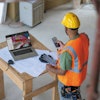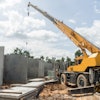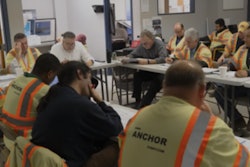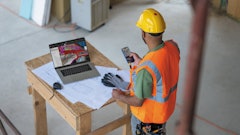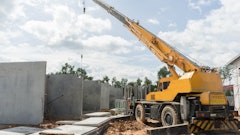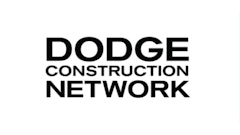
Across nearly every sector, artificial intelligence is changing the way work gets done. In construction, however, the digital transformation era is just getting started — and the potential impact is huge.
Despite forecasts projecting the global construction market to surpass $20 trillion by 2029 (up from $16.45 trillion in 2025), the industry has historically lagged in digitization. This slow adoption has held back productivity and contributed to a near-stagnant 1% growth rate over the past two decades.
While general-purpose AI tools have helped other industries, construction faces unique challenges. That’s why vertical AI — AI built specifically for construction — is emerging as the next big breakthrough for contractors, project managers and building directors.
Understanding Vertical AI
Vertical AI is designed for professionals that deliver a specialized service in a specific industry, such as general contractors, construction project managers and building company directors. It can be trained on trade-specific workflows and calibrated to the real-world conditions construction professionals face every day.
Fundamentally, the role of vertical AI systems is not to replace people, but instead enhance how they work. For example:
When it comes to forecasting, vertical AI can scan project schedules and architectural drawings in real time, then identify potential delays and other issues before they arise
Rather than manually writing safety reports, vertical AI can generate them instantly based on site activity
Instead of simply outlining a punch list, vertical AI can curate and prioritize these for different contractors to mitigate quality assurance bottlenecks before handover occurs
Through the mix of both active and passive support vertical AI can provide, construction professionals can complete tasks faster, more accurately and safer.
Why Construction Needs Vertical AI Now
In the US and more broadly, there are several intersecting pressures driving an increasing need for vertical AI and productivity innovations. A shortage of skilled workers continues to affect projects across the US. It is estimated the industry needs roughly 500,000 more workers to meet construction demand levels.
Regulation and compliance obligations are also being tightened across health, safety and environmental areas. Managing this manually puts pressure on project managers and increases the risk of non-compliance. Furthermore, construction companies now have to collect enormous amounts of operational data, but few have the time or systems to extract actionable, profitability-boosting insights from it.
Combined, these market influences are creating a productivity ceiling, however vertical AI can provide the digital tools to help break through it.
Why General AI Tools Aren’t Enough
General-purpose AI — from ChatGPT to Claude and Gemini — can generate text and summarize information, but they aren’t designed for jobsite realities. Construction sites are dynamic, high-pressure environments where tasks change hourly and miscommunications can have serious consequences. Vertical AI is trained on real-world construction data, integrates with safety protocols and scheduling systems, and provides context-aware recommendations.
A Global Use Case: Lessons from Australia
Australia has become a useful test case for construction technology due to its high housing delivery targets, increased labor costs, regulatory complexity and increasing quality control requirements. In response, many construction businesses down under are investigating or have implemented software that enable teams to manage multiple projects, contractor networks and other important tasks concurrently and with greater precision.
This has created fertile ground for vertical AI development, with real-world conditions both locally and abroad helping to push product innovation ahead faster than in other markets. Having now established operations in Austin, Texas, we are seeing similar conditions emerge in the US.
A recent Consumer Affairs study revealed that four of America’s top ten cities for new home construction were Austin, Houston, Dallas and San Antonio, comprising over 19,700 approved permits. This further underscores the importance of digital innovation among contractors to enhance jobsite efficiency, especially in market conditions where hands-on resourcing is not keeping pace with demand.
Builder-Led Tech
Construction professionals with on-site experience are increasingly influencing the design and development of the digital tools the labor force uses daily. It is not just big enterprises building blindly for jobs they think they know how to do. Software must reflect how people actually work on-site.
One of my first jobs was hands-on experience working on retail fitouts. These real-world insights and collaboration with industry are fundamental to drive innovation in vertical AI development. It must work on mobile devices, function offline and make sense to teams with varying levels of digital literacy.
The success of construction AI will be defined by how well (and easily) it serves the needs of its users, not by what marketing teams say it can do.
Beyond Vertical AI: Agentic AI
While vertical AI automates reporting and task support, Agentic AI takes things further. These systems act independently, proactively managing workflows, monitoring project health, and even taking action when required. Imagine a foreman receiving a real-time alert about overdue scaffold checks, with the system already drafting a schedule and assigning tasks — that’s the power of Agentic AI.
Looking Ahead
Vertical AI and emerging digital tools are helping close the gap between what needs to be done and what actually gets done. They aren’t a silver bullet, but they can boost productivity, reduce rework, and improve safety almost immediately. For contractors and project managers facing growing workloads and tight deadlines, vertical AI could be a game-changer.
The U.S. construction sector — and its global peers — is on the brink of a major leap forward. Vertical AI may well be one of the forces driving that transformation.


